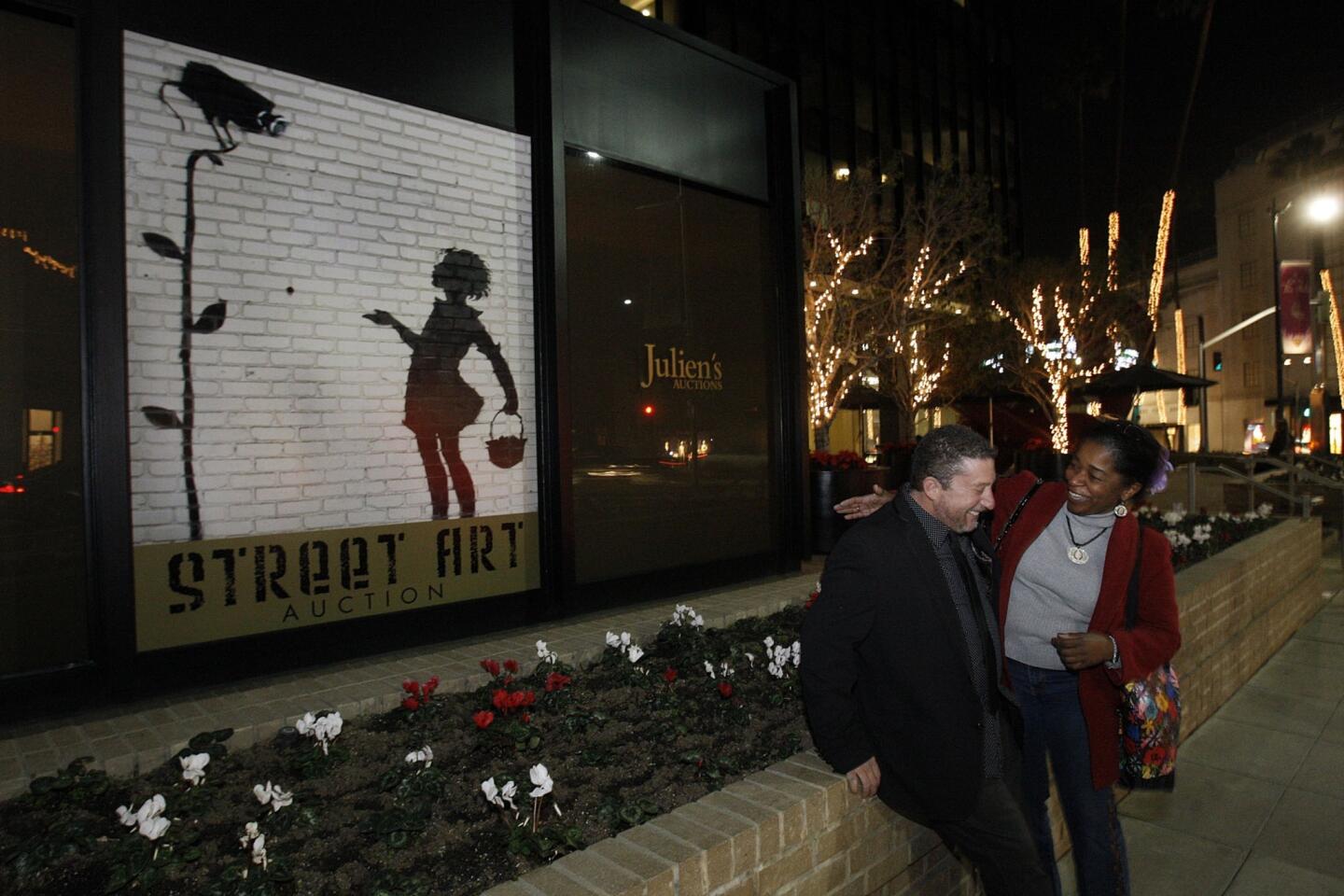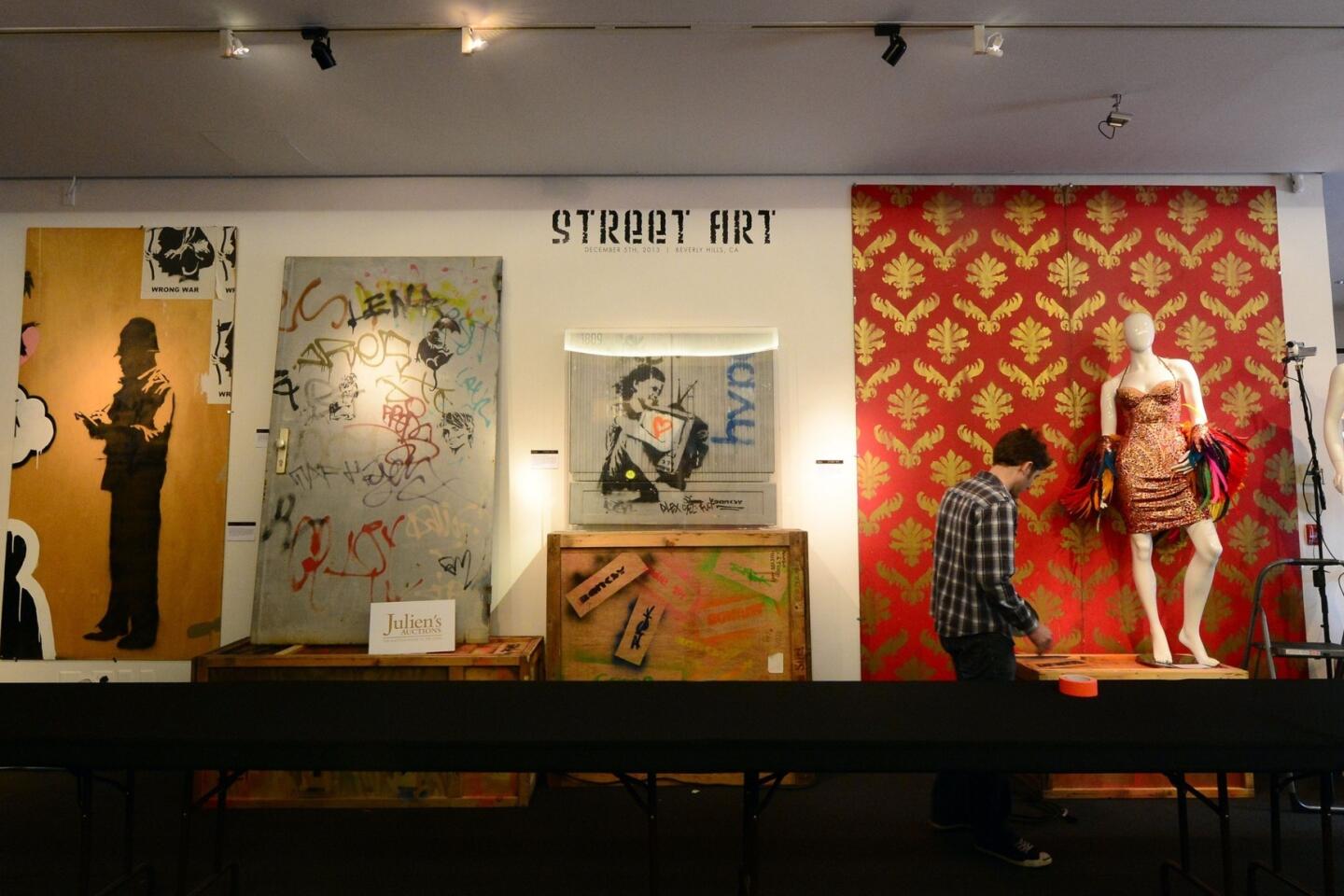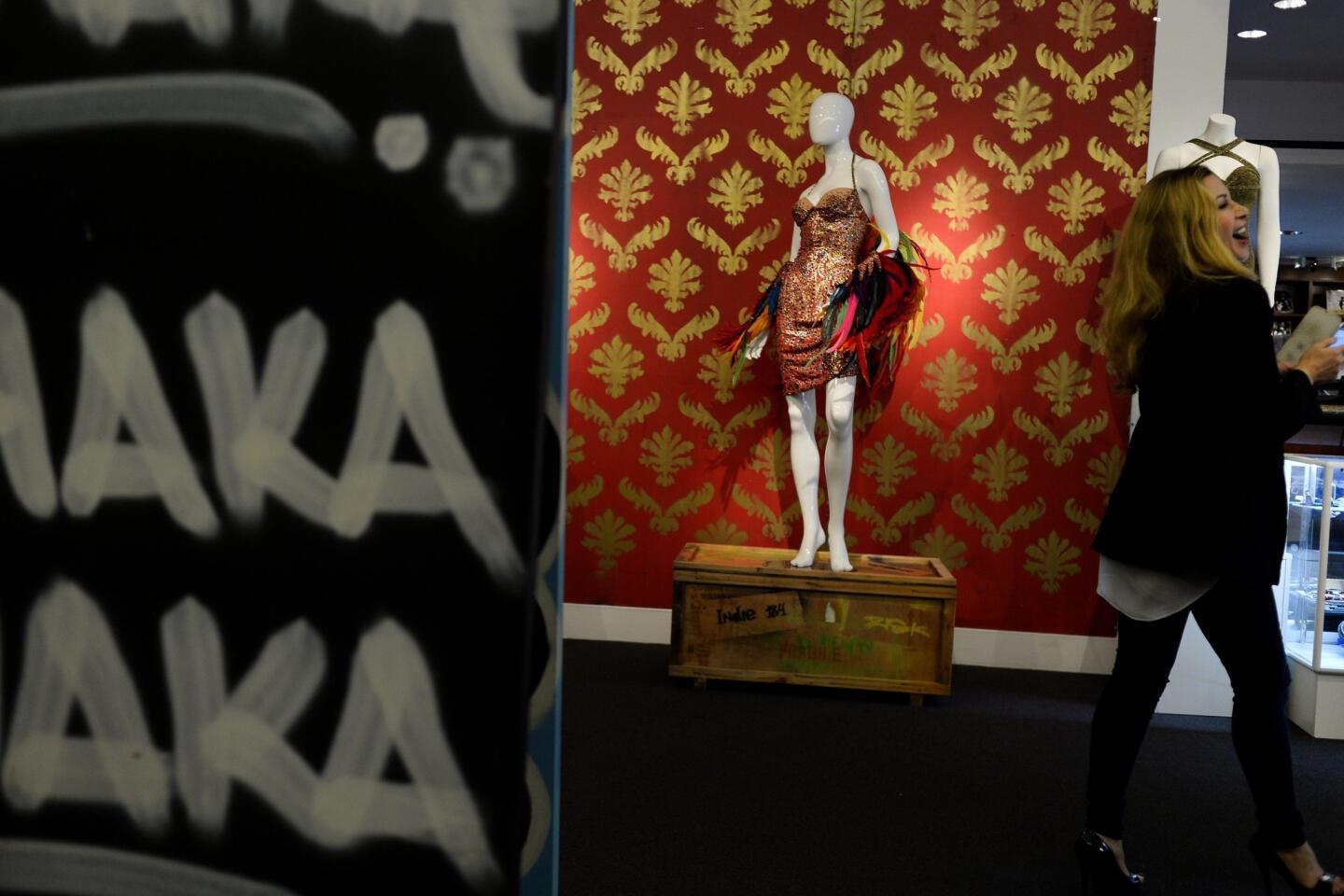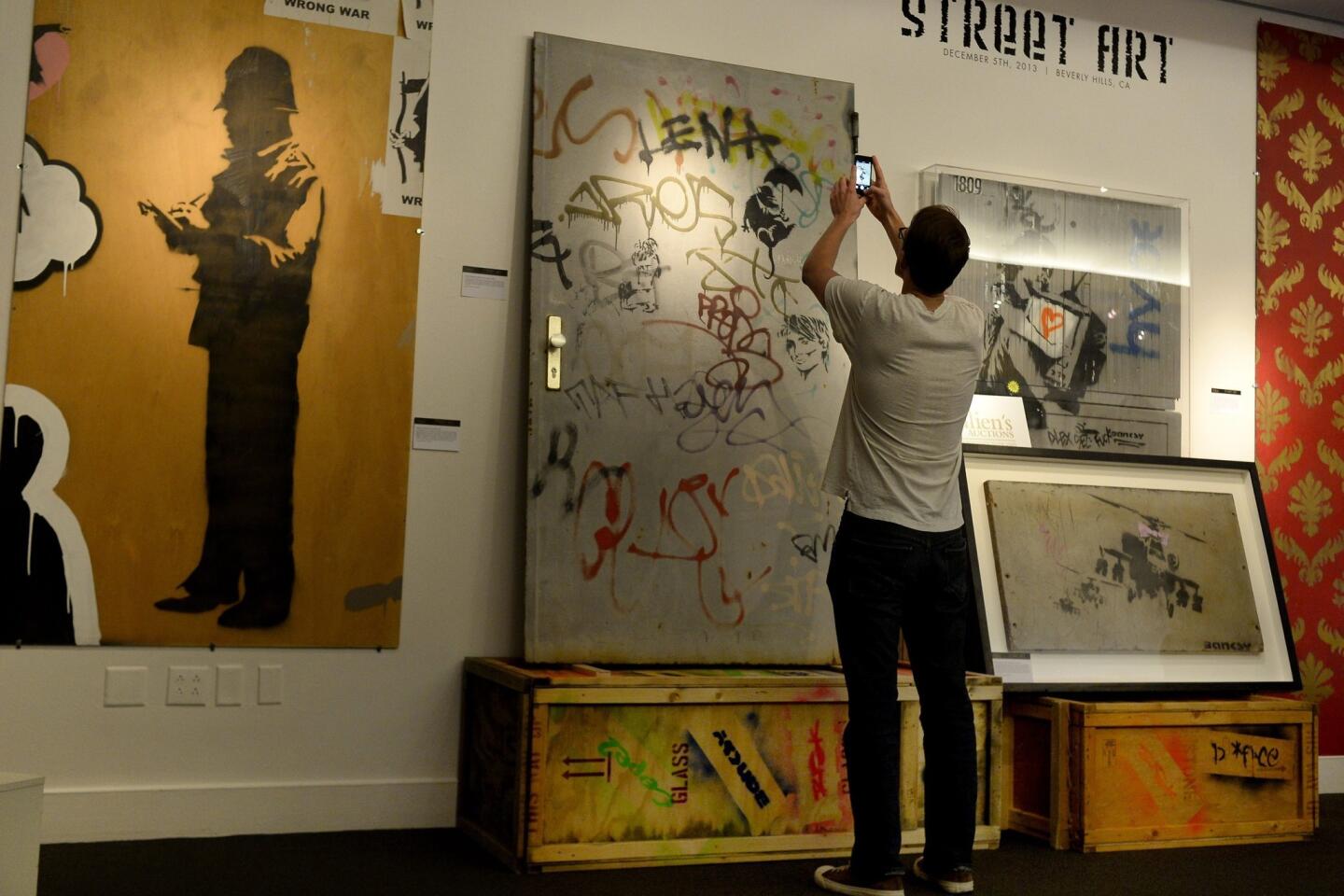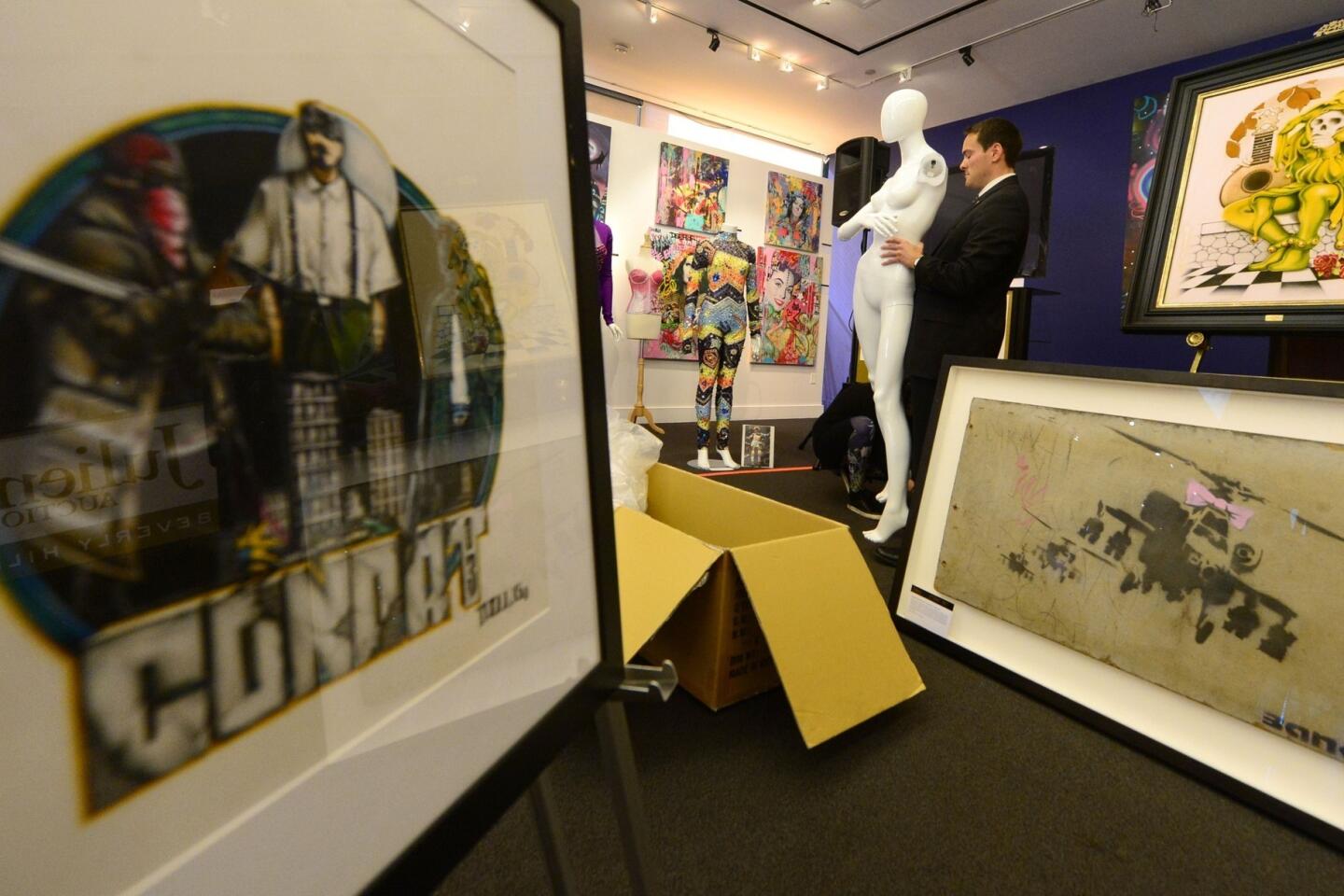Banksy mural from L.A. gas station sells for $209,000 at auction
Banksy has proved bankable in Beverly Hills.
The mysterious British street artist’s “Flower Girl” mural, which he stenciled onto the wall of a Los Angeles gas station in 2008, was sold for $209,000 Thursday evening at Julien’s Auctions, where it was the highlight of a sale of nearly 100 works by 33 street artists.
The gavel price was $170,000 for the 9-by-8-foot, nearly 4-ton rectangular slab of white brick with black spray paint. The mural, which came with a customary additional “buyer’s premium” to yield the final total, shows a little girl holding a flower basket under the eye of a surveillance camera planted atop a tall, leafy stalk.
With about 150 people gathered in the auction room, bids rolled in by phone and online. Julien’s Executive Director Martin Nolan said the winning bid was phoned in by a Los Angeles buyer who requested anonymity.
The auction included five other works by Banksy that were done between 2002 and 2006. They fetched $421,250 combined, although one of the sales wasn’t final because the gavel price had fallen $10,000 short of the $150,000 pre-sale estimate.
The highest known price for a Banksy work is about $1.1 million for a London mural called “Slave Labor” that was auctioned in London in June.
Part of the artist’s fame comes from being incognito. Although he was the subject of the 2010 Oscar-nominated documentary “Exit Through the Gift Shop,” the artist’s identity remains unknown. Some believe Banksy might be a collective “they.” (In October, Banksy’s website said he’d been conducting a fall residency in New York City.)
The seller of the L.A. mural was Eytan Rosenberg, former owner of a Valero gas station at the corner of Beverly Boulevard and La Brea Avenue, who says that five years ago he gave the OK for a group of three street artists to paint something on its white brick wall.
ART: Can you guess the high price?
Rosenberg, 44, said his recollection wasn’t strong enough to identify Banksy even if he saw him today, but he thought he shook the artist’s hand.
“I remember he was wearing a black hoodie and jeans that were covered with black and white paint, and he had paint under his fingernails,” Rosenberg recalled in an interview Thursday before the auction.
Rosenberg said he had long been friendly with Mr. Brainwash, a French-born, L.A.-based street artist and filmmaker who was also featured in “Exit Through the Gift Shop.”
Rosenberg said that when Mr. Brainwash approached him about using the filling station wall, he was accompanied by another Frenchman and a British man he now assumes was Banksy — if Banksy is indeed one person. He said they had pulled up in a truck with a bunch of stencils in the back.
INTERACTIVE: Tour Los Angeles’ boulevards
Mr. Brainwash “said it would be tasteful, not anything risque,” Rosenberg recalled. “I hate graffiti from gangs, but I appreciate street art and murals.”
A few weeks later, Rosenberg, whose family first opened a filling station on the corner in 1973, arrived to find the mural, painted in the pre-dawn hours. Aficionados had already gathered to take photos of the new work.
In November 2012, Rosenberg and his sister sold the gas station, which became a Chevron. But he wanted to preserve “Flower Girl,” so he struck a deal with the new owner, who agreed to give Rosenberg several months to remove the mural.
PHOTOS: Google Doodles of 2013
In what Rosenberg described as a delicate and expensive operation, the brick facade was removed in April, along with a section of the building’s steel supports and part of the drywall on its interior. Art removal experts hauled it directly to Julien’s storage facility, where “Flower Girl” has remained.
In the auction gallery Thursday, bidders saw its image on flat-screen monitors set up beside auctioneer Tim Luke’s podium.
“I wish I could keep it, but it was out of my pay grade,” Rosenberg said.
Rosenberg and his sister want to use the money from the sale to build a car wash.
“If I hadn’t financed [the mural’s preservation] there would have been another art piece that didn’t survive,” he said. “I took a financial risk to make sure it survived.” The removal process could have caused the brick wall to crumble, he said.
“I hope whoever gets it takes care of it,” Rosenberg said Thursday afternoon.
More to Read
Sign up for Essential California
The most important California stories and recommendations in your inbox every morning.
You may occasionally receive promotional content from the Los Angeles Times.
